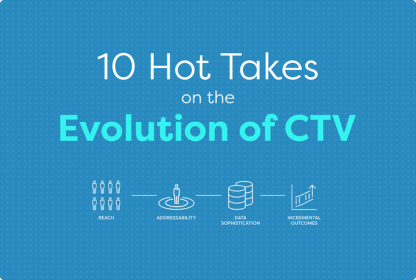CTV advertising is evolving fast, with marketers adopting an outcome-driven approach to ensure their ads reach the right audience at the right time to drive real sales. But audience targeting is only half the equation. The next critical question is: Did the ad work?
Impressions, reach, and frequency are insufficient for performance-focused brands. They need real proof of business outcomes, online and offline.
CTV Advertising Measurement: Expectations vs. Reality
Marketers expect CTV to deliver on multiple fronts: advanced targeting, premium content, cross-device reach, and transparent attribution. However, CTV’s roots are in a legacy TV model prioritizing leading indicators like delivery and reach over performance outcomes.
As a result, there’s a growing gap between what brands expect and what traditional CTV solutions can prove. That disconnect makes it difficult to justify budgets, scale campaigns, or optimize for impact.
What’s Preventing True CTV Ad Measurement
1. Fragmented Platforms, Fragmented Data
The challenge: CTV spans a complex web of apps, platforms, devices, and publishers. Each operates within its own data silo and reporting framework, and there is no standard for tracking ad exposure across environments.
The impact: Brands can’t see the entire picture, leading to duplicated impressions, wasted spending, and audience fatigue. Media effectiveness is difficult to quantify, let alone optimize.
2. Limited Identity Resolution and Incomplete Attribution
The challenge: With cookie deprecation and mobile ID restrictions, many CTV platforms rely on probabilistic methods—guessing at household or user behavior instead of deterministically tying ad exposure to outcomes. At the same time, most reporting stops at impressions, without connecting the dots to a verified purchase, site visit, or in-store action, especially those that happen offline or after long consideration cycles.
The impact: Attribution becomes unreliable. Marketers are left making decisions based on assumptions rather than proof, with no clear visibility into what actually drove results. That uncertainty undermines confidence in the channel and limits CTV’s potential as a scalable performance driver.
3. Short-Term Metrics, Long-Term Goals
The challenge: Too many CTV platforms stop at surface-level KPIs: impressions, completion rates, and CPM. These metrics say little about actual conversions or downstream impact. This is especially problematic for brands with longer decision cycles or high-consideration purchases.
The impact: Marketers may optimize creative, budget, or targeting based on leading indicators rather than business results. Channels that look efficient on paper may underperform in reality, while truly effective ones are undervalued.

What Closed-Loop CTV Measurement Looks Like
Marketers need more than delivery stats to realize CTV’s full potential as a performance channel. They need outcome-based measurement that proves real-world impact.
Here’s what that looks like:
Deterministic identity resolution at the household level
- Accurately match ad exposure to real-world behaviors with zero guesswork required.
Conversion tracking that spans online and offline
- Purchases don’t just happen online. Measurement shouldn’t stop at pixels or clicks.
Incrementality over impression counts
- Know whether your ads drove measurable outcomes, not just whether they were seen.
How PebblePost Fixes CTV Advertising Attribution
At PebblePost, we built our Performance CTV solution from the ground up for performance marketers. That means we tie ad exposure to outcomes you can measure, trust, and optimize against.
Here’s how we do it:
Verified Incrementality
Every marketing campaign includes exposed and control groups to isolate lift and prove what worked. No assumptions. Just results.
Deterministic Attribution
We use advanced identity resolution and first-party transaction data—not third-party cookies or outdated identifiers—to tie CTV ad exposure to online and offline conversions.
Closed-Loop Measurement
We connect your media dollars to KPIs like ROAS, lift, and conversion rates—giving you visibility across the whole funnel, not just the top.
Independent Verification
We integrate with leading measurement providers so you can validate performance alongside other media channels and confidently invest in CTV.
Don’t Let Measurement Be the Roadblock
CTV’s reach and relevance are no longer in question. But for it to become a true performance channel, marketers need a clear view of what their investment is delivering.
PebblePost’s Performance CTV connects the dots between ad exposure and real outcomes—online or offline. Reach out to see how outcome-based measurement can transform your media strategy.



